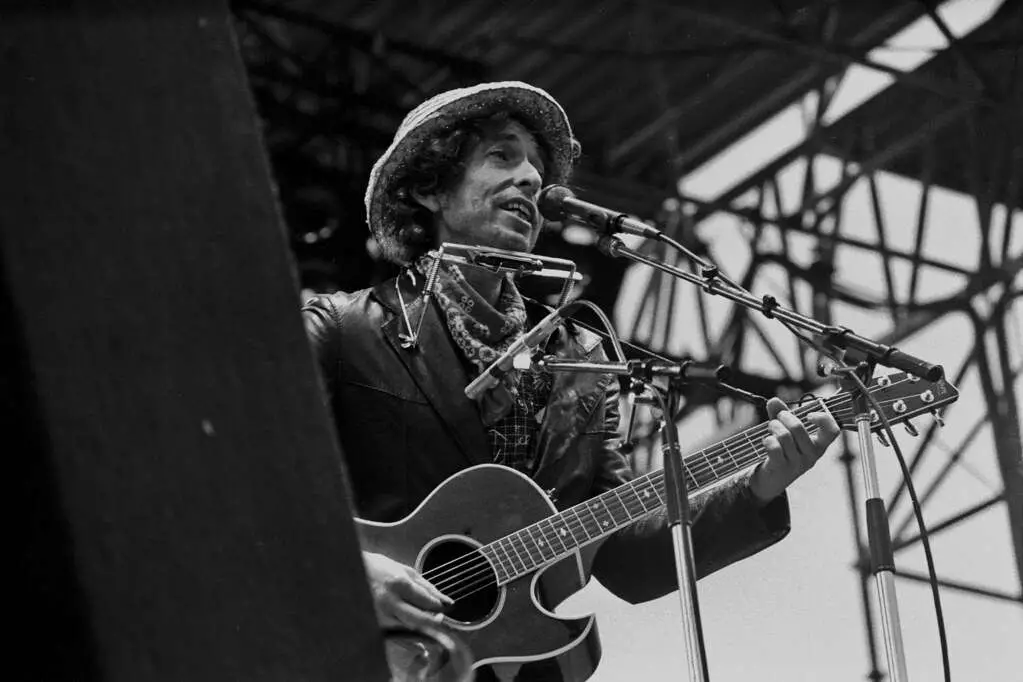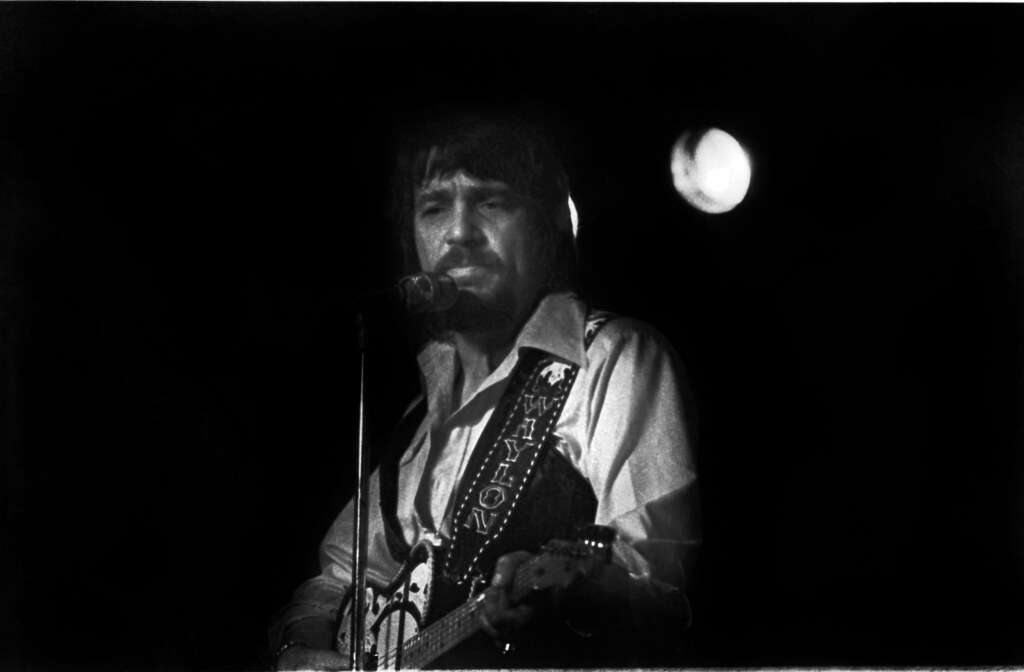Bob Dylan is a legendary musician known for his poetic lyrics and distinctive voice. However, his impact on guitarists should not be overlooked. Dylan’s songs offer a wide range of guitar styles, from simple strumming patterns to complex fingerpicking techniques.
For beginners, his early folk songs like “Blowin’ in the Wind” and “Knockin’ on Heaven’s Door” provide a great starting point. These songs feature basic chords and straightforward strumming patterns, making them accessible to new guitarists. Here are some tips for learning his songs on guitar, from easy to enlightening:
Easy
- Start with Bob Dylan’s simpler songs, such as “Blowin’ in the Wind” or “Knockin’ on Heaven’s Door.” These songs have basic chords and strumming patterns that are easy to learn.
- Look up guitar tabs or chord charts for these songs online. This will give you an idea of which chords to play and where to play them.
- Practice playing these songs slowly and gradually increase the speed. With patience and persistence, you’ll soon be able to play them at full speed.
The chords for songs like “Blowin’ in the Wind” and “Knockin’ on Heaven’s Door” are as follows:
- “Blowin’ in the Wind”: The chords for this song are G, C, and D.
- “Knockin’ on Heaven’s Door”: The chords for this song are G, D, Am, and C.
Knockin’ on Heaven’s Door Playalong
As players progress, they can delve into Dylan’s more intricate compositions, such as “Don’t Think Twice, It’s All Right” and “Mr. Tambourine Man.” The songs also incorporate fingerpicking and alternate tunings, challenging guitarists to expand their skills.
- Once you’ve mastered some of Dylan’s easier songs, you can move on to more complex songs like “Tangled Up in Blue” or “Like a Rolling Stone.” These songs have more intricate chord progressions and picking patterns.
- Take the time to learn the correct fingerings and strumming patterns. Dylan’s music has a particular sound and feel that you’ll want to emulate.
- Practice these songs with a metronome to improve your timing and rhythm.
The picking and strumming style used in playing “Mr. Tambourine Man” is a combination of fingerpicking and strumming techniques. The song is primarily played using a fingerpicking pattern on the guitar, with the thumb playing the bass notes on the lower strings and the fingers plucking the higher strings to create a melodic accompaniment. Additionally, there are sections in the song where strumming is used to create a fuller sound and add emphasis to certain parts. Overall, the picking and strumming style in “Mr. Tambourine Man” showcases a dynamic and intricate approach to guitar playing.
Don’t Think Twice, It’s All Right Playalong
Enlightening:
- For a real challenge, try learning some of Bob Dylan’s experimental songs like “Desolation Row” or “Sad Eyed Lady of the Lowlands.” These songs have unconventional chord progressions and may require you to play in alternate tunings.
- It’s also worth studying Dylan’s lyrics and song structures in more depth. Many of his songs have intricate narratives and poetic language that you can learn from.
- Don’t be afraid to experiment with your guitar playing and try new things. Dylan is known for pushing boundaries and you can do the same with your music.
Finally, for those seeking a deeper understanding of Dylan’s guitar playing, his electric period offers a wealth of inspiration. Songs like “Like a Rolling Stone” and “Tangled Up in Blue” showcase Dylan’s ability to blend folk and rock, incorporating bluesy riffs and innovative chord progressions. Overall, Bob Dylan’s music provides a rich and diverse landscape for guitarists to explore, from easy beginnings to enlightening complexities.
The Guitars of Bob Dylan Played
One of his most famous guitars is a 1964 sunburst Fender Stratocaster, which he played during his electric period in the mid-1960s. This guitar, often referred to as “Dylan’s Strat,” has become synonymous with his groundbreaking sound and the controversial shift from acoustic folk to electric rock. With its bright tone and versatile sound, the guitar helped Dylan redefine the boundaries of popular music and cement his status as a musical pioneer. Over the years, Dylan has continued to experiment with different guitars, incorporating various models such as Gibson, Martin, and Taylor into his performances. However, it is the image of him strumming his sunburst Stratocaster that remains etched in the collective memory of music lovers worldwide. The guitar of Bob Dylan is not just an instrument, but a symbol of artistic evolution and the power of music to challenge conventions.
Guitarists Inspired by Bob Dylan
Dylan,has been a profound source of inspiration for many guitarists throughout the years. His unique blend of folk, rock, and poetic lyrics has captivated musicians from various genres. Dylan’s innovative guitar playing style, characterized by intricate fingerpicking and rhythmic strumming patterns, has influenced countless artists. His use of open tunings and unconventional chord progressions has pushed the boundaries of what can be achieved on the guitar. Guitarists such as Neil Young, Bruce Springsteen, and Tom Petty have all cited Dylan as a major influence on their playing. Dylan’s ability to convey emotion through his guitar playing, coupled with his thought-provoking lyrics, has left an indelible mark on the world of music.
Was Dylan Fussy About The Guitar Players He Played With?
Yes, Bob Dylan was known to be fussy about other guitar players performing with him. He had a specific vision for his music and wanted to ensure that his guitarists understood and could execute that vision. Dylan was known to be highly involved in the arrangement and performance of his songs, and he expected his guitarists to follow his lead precisely. He wanted them to play the right chords, the right notes, and the right solos, all in accordance with his artistic vision. Dylan was a perfectionist when it came to his music, and he wanted his guitarists to meet his high standards. As a result, he was known to be quite demanding and particular about who he allowed to perform with him on stage. He wanted guitarists who could not only play well, but who could also understand and interpret his music in the way that he intended. This level of precision and attention to detail was important to Dylan, as it allowed him to create the sound and atmosphere that he desired for his performances. So, yes, Bob Dylan was indeed fussy about other guitar players performing with him.
Mike Bloomfield and Bob Dylan
Mike Bloomfield and Bob Dylan were both influential figures in the music industry during the 1960s. Bloomfield, a talented guitarist, was known for his bluesy style and played with various bands such as the Paul Butterfield Blues Band and the Electric Flag. Dylan, on the other hand, was a singer-songwriter who became an icon of the folk music movement. His poetic lyrics and distinctive voice resonated with audiences around the world. Despite their different musical backgrounds, Bloomfield and Dylan collaborated on several projects, including Dylan’s landmark album “Highway 61 Revisited.” Their partnership showcased their individual talents and contributed to the evolution of music during that era.
“Bob Dylan, Santana, Joan Baez 3105840113” by Cover Photo Credit Heinrich Klaffs is licensed under CC BY-NC-SA 2.0 .











